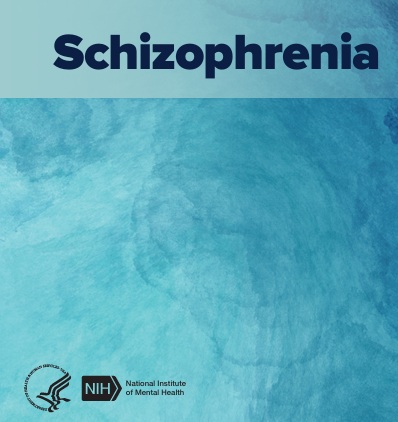Care & Drug Courts
Los Angeles, CA
- California CARE Court
- The first step is a petition to the court by a family member, behavioral health provider, first responder, or other approved party to provide care and prevent institutionalization of an individual.
- The civil court then orders a clinical assessment after a reasonable likelihood of meeting the CARE Court criteria is held. The court appoints a public defender and a CARE supporter to represent the individual to ensure their rights are being protected.
- The court reviews the clinical evaluation, and if the person meets the criteria, the development of a CARE plan is ordered, which will include therapy, medications, and housing as part of its objective Learn More Western Poverty Law 1/22/2024
- Eligibility Criteria LA Court.org
- Eligible petitioners must complete and submit the following materials to begin the CARE Court process:
- CARE-100 form AND
- CARE-101 Mental Health Declaration from a licensed behavioral health provider
OR - Attach evidence, to CARE-100 form, that the person in need of services was detained for a minimum of two periods of intensive treatment (WIC 5250 hold process) and the most recent event occurred within the past 60 days.
- Eligible petitioners must complete and submit the following materials to begin the CARE Court process:
- Community Assistance, Recovery and Empowerment (CARE) Act
- CARE Court Information and Resources DMH Department of Mental Health
- NAMI on Care Court
- 6 things to know about how Gov. Newsom’s CARE Court is working so far Cal Matters.org 9/2025
- Attorney I found on Google who can help you get your loved one help
- CA Courts What is Drug Court?
- Most adult drug courts in California are post-adjudication models in which participants are placed in drug court after entering a guilty plea.
- DHCS
- If you have questions, we are not really qualified to help you. Please contact the court, a therapist, your attorney, etc.
Evaluations and services under the CARE Act Blue Shield covers the cost of developing an evaluation and the provision of all health care services for an enrollee when required or recommended pursuant to a CARE (Community Assistance, Recovery, and Empowerment) agreement or CARE plan approved by a court in accordance with the CARE Act. The evaluation and services, other than prescription Drugs, are covered at no charge whether they are provided by a Participating or Non-Participating Provider.
#Schizophrenia
- Schizophrenia Booklet NIH
- nimh.nih.gov/schizophrenia
- web md.com/schizophrenia/
- Mayo clinic on schizophrenia
- Wikipedia on schizophrenia
AI Summary
CARE Courts in Los Angeles are operational, but there are mixed results and challenges to their effectiveness. While the program is connecting some people to mental health care and creating voluntary CARE agreements, it has had a slow start with a very low number of court-ordered plans and has not yet had any participants successfully complete the process in Los Angeles. Challenges include a slower-than-expected rollout and difficulties with petitioning, though supporters believe the program needs more time and effort to succeed.
Progress and positive outcomes
- Connecting people to services: The program has connected some individuals to mental and behavioral health care, housing, and other services, though the number is lower than the initial projections.
- Establishing CARE agreements: Some individuals have agreed to voluntary CARE agreements, which is a step toward getting help.
- Addressing severe cases: The program is seen as a tool to address some of the most serious mental health crises.
- Increased petitions: Los Angeles County, in particular, has seen the most petitions filed, which is considered a sign of steady, gradual progress by some.
Challenges and criticisms
- Low number of court-ordered plans: Despite the initial promise, very few court-ordered treatment plans have been issued in Los Angeles, with most counties offering voluntary agreements instead.
- Slow rollout: The pace of the program is significantly slower than anticipated, with some counties initially needing to divert staff to raise awareness about the new system.
- Lack of successful completions: Los Angeles County has not yet had any “graduations,” meaning no one has successfully completed a CARE Court plan.
- Low overall engagement: The program has reached fewer people than projected, and petitioning has been difficult, leading to many dismissed petitions.
What the program is trying to achieve
- Voluntary treatment: The program’s core is designed to be voluntary, connecting people with support and resources for mental health care, housing, and other services through a collaborative process.
- Court-ordered support: If an individual refuses voluntary treatment, a judge can order them to participate in a treatment plan, which can include medication, counseling, and housing.
- Addressing severe mental illness: The program is specifically targeted at individuals with severe mental illness who are unable to care for themselves. Get the Citations & Links Google AI
Find an Attorney
- Legal Match
- Findlaw.com
- American Bar Association
- Attorney Search Network
- Follow the links on this webpage. Many of them go to articles on Attorney Websites
- Also, see our appeals webpage
- Medi Cal Contact
- State Bar of California Attorney Referral Service
#Attorney 's --- Social Security Disability maze
- Sellers Law
- Hill & Ponton
- premier disability.com
- Cantrell & Green
-
- We don't necessarily know these attorney's...
- Editorial: Lawyers are fighting innovative proposals for more affordable legal assistance. That’s wrong LA Times 1.30.2022
- We don't necessarily know these attorney's...
Estate Planning

